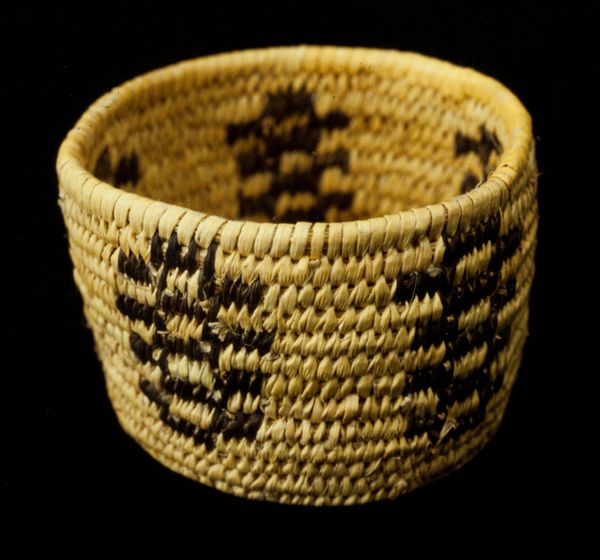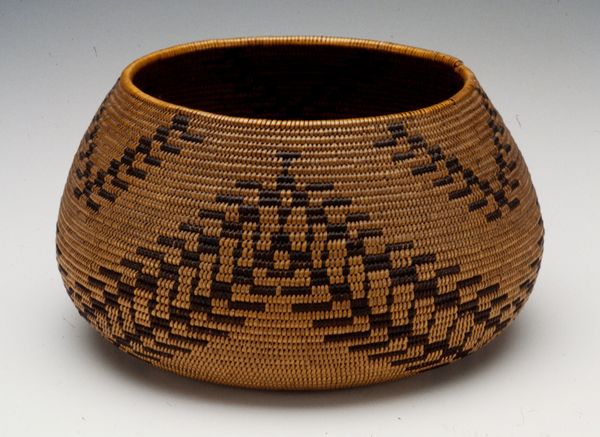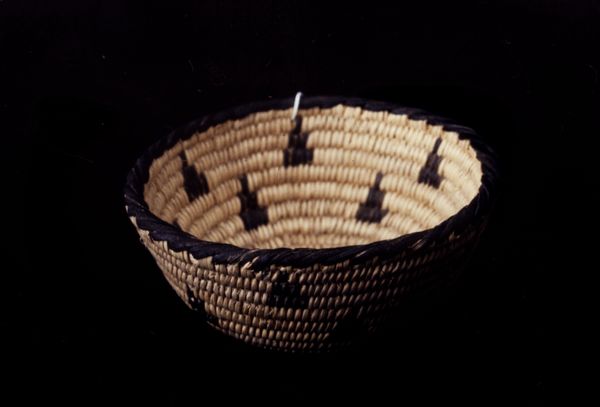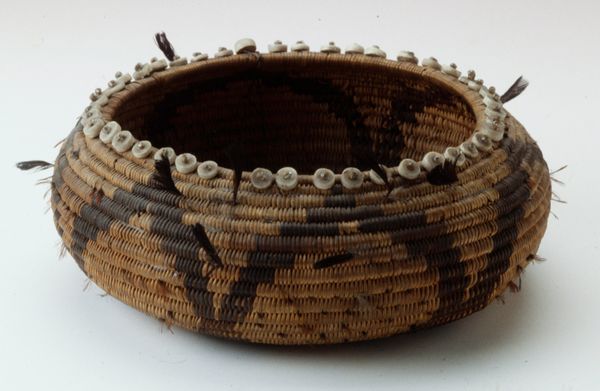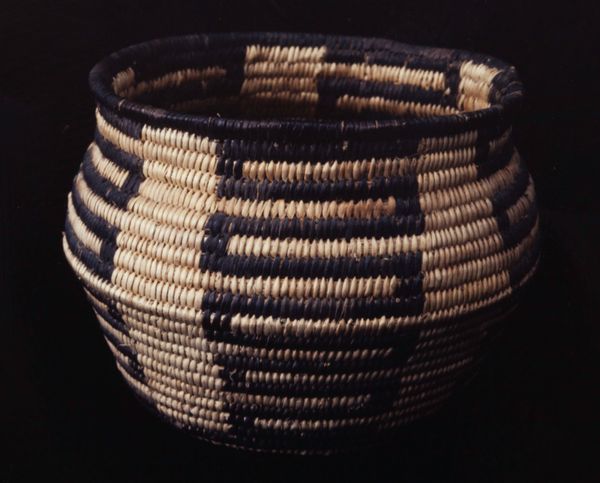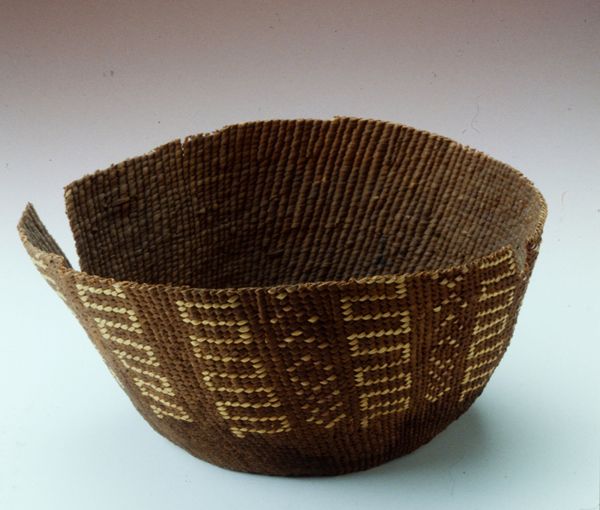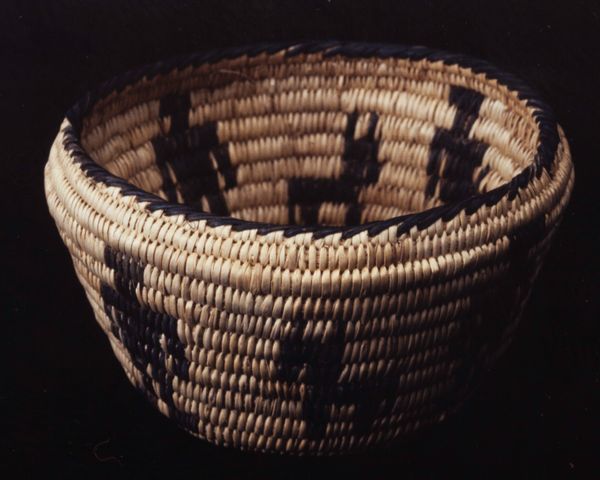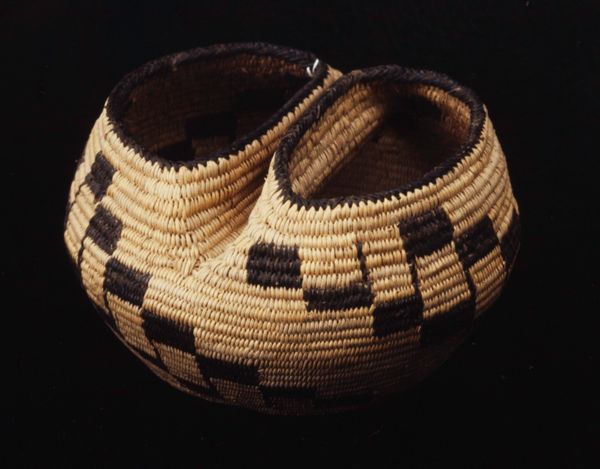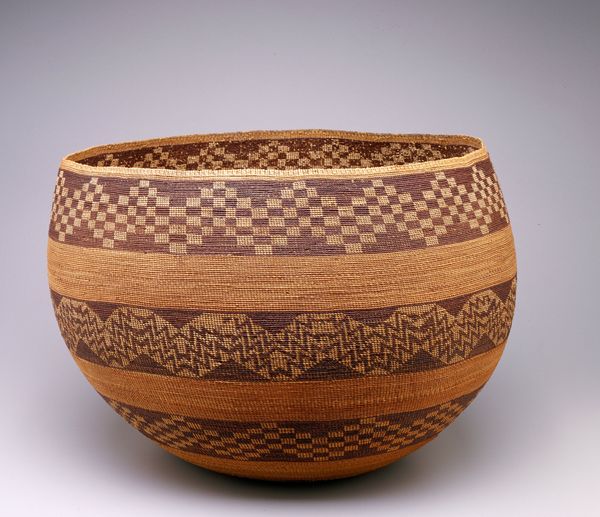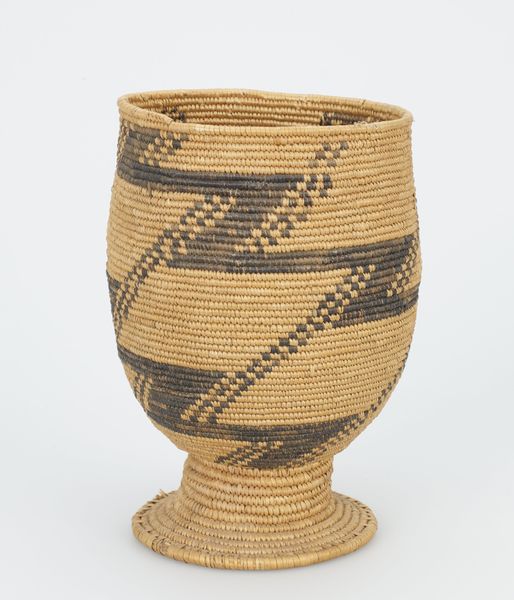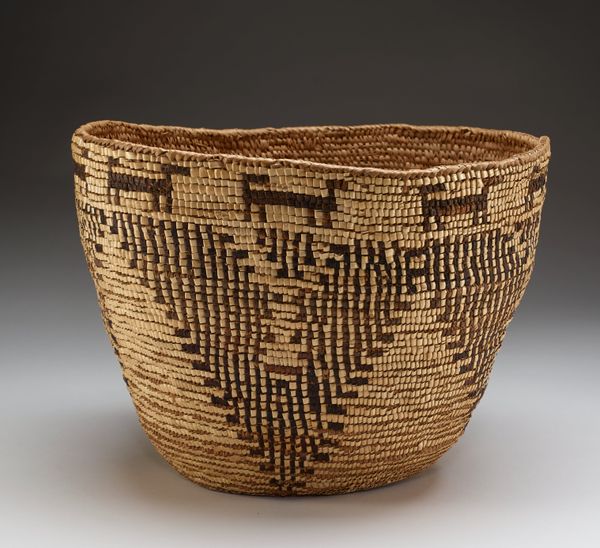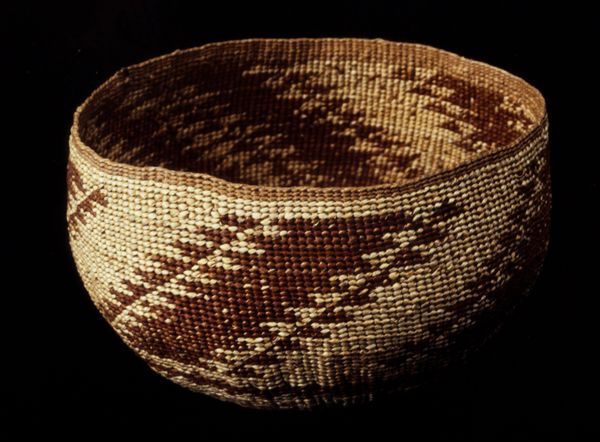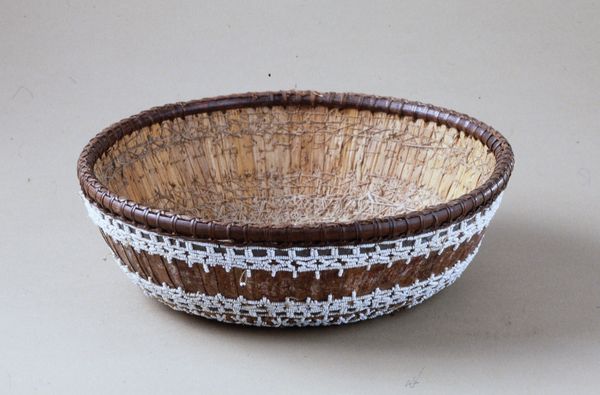
fibre-art, weaving
#
fibre-art
#
weaving
#
geometric
#
indigenous-americas
Dimensions: 9 3/8 x 9 3/4 x 9 3/4 in. (23.81 x 24.77 x 24.77 cm)
Copyright: Public Domain
Curator: Before us is a striking coiled basket, created around 1930 by Hopituh Shinumu, more commonly known as Hopi, artists. This beautiful example of fibre-art resides here at the Minneapolis Institute of Art. What are your initial thoughts? Editor: There's a really earthy quality to it, isn’t there? The way the bands of colour—the creamy yellows and the browns, offset by the black—are woven together, gives a satisfying sense of rhythm. And, because of the geometric forms, it also reminds me of modernist paintings. Curator: Absolutely, its creation during that period invites speculation on the interplay between indigenous art and modernist aesthetics, particularly given the socio-political dynamics that defined Indigenous communities during that time. This basket transcends mere functionality; it represents a rich intersection of cultural identity and artistic expression. The very act of weaving became an assertion of self and community. Editor: Yes, I agree. Thinking about the history of Native American art objects being collected and displayed… the question becomes: how were objects like this used or understood within the Hopi community versus how they are now perceived in a museum context? There's always that translation, that potential for misinterpretation, that hangs in the air. Curator: And it speaks to the ways that Indigenous women were actively engaging with economic opportunities while simultaneously upholding ancestral traditions. The market for these baskets existed and was impacted by external forces, so it’s important to acknowledge the complexities involved. These were not isolated artworks. Editor: It also complicates any romantic ideas we might project onto the piece. A contemporary reading, therefore, also brings in the long, complicated history of colonial legacies, cultural appropriation, and questions around representation in art. This object becomes a focal point for dialogue. Curator: Indeed, it urges us to contemplate these layered contexts, highlighting the ongoing dialogue between past and present, tradition and innovation, Indigenous identity and external perception. Editor: Looking at the texture, the almost tactile nature of the piece makes me want to know what else this basket contained or could hold; both materially and symbolically. That simple, yet incredibly well-crafted, object is more resonant than it might seem at first glance.
Comments
minneapolisinstituteofart almost 2 years ago
⋮
The exact history of the development of Hòpituh Shi-nu-mu basketmaking remains vague, however modern artists have come to be considered one of the foremost basketmaking groups in North America. Their baskets employ the technique of sewing slender yucca splints wound tightly and stitched so closely that the stitches appear to be interlocked. Baskets were often created for sale, but during the active tourism market of the late nineteenth and twentieth century, many traditional and even some sacred baskets were sold. Hòpituh Shi-nu-mu workmanship, however, remained consistent and it is nearly impossible to differentiate baskets made for the market from those made for Native use. Hòpituh Shi-nu-mu basketmakers were seldom, if at all, driven by the market to produce Euro-American shapes, something that distinguishes Hòpituh Shi-nu-mu artists from basketmakers from other tribes. Rare concessions included deep wastepaper forms and the limited use of bright aniline colors for a short period of time.
Join the conversation
Join millions of artists and users on Artera today and experience the ultimate creative platform.
